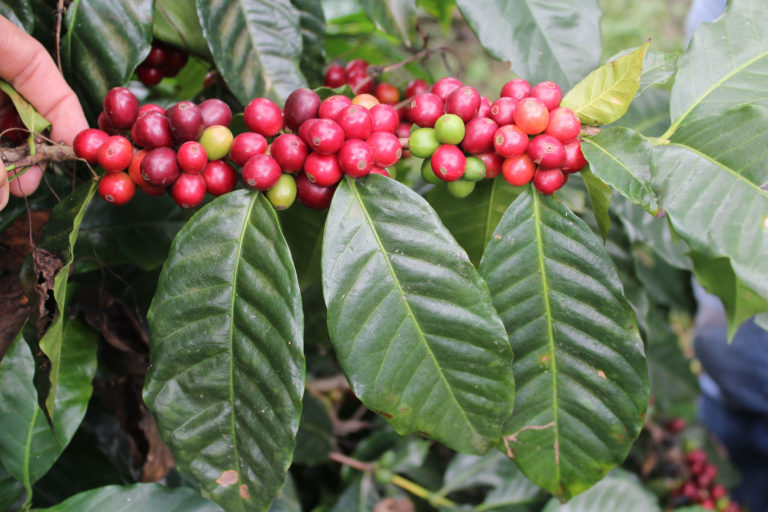How did Vietnam become the second largest coffee producer in the world in just 30 years?

Professional coffee knowledge exchange more coffee bean information please follow the coffee workshop (Wechat official account cafe_style)
Coffee was introduced to Vietnam by French colonialists as early as 1857. At that time, Vietnam took tea as its main daily drink. Although coffee was introduced into Vietnam, the subsequent wars in Vietnam made it impossible for coffee production to proceed normally. Coffee production began to resume in the 1980s and 1990s, when Vietnam began its economic reform.
More than 30 years have passed so far. Vietnam's coffee production reached 900000 tons in 2000, 1.13tons in 2006, 1.25tons in 2012 and 1.72tons in 2016. In the 1990s, coffee production in Vietnam has been growing at a rate of 20 or 30 percent. Vietnam has gone from 1% of the world's coffee production to 20 percent today! Vietnam now has the second highest coffee production in the world, after Brazil.
Vietnamese coffee can be seen all over the world today, fully demonstrating the success of Vietnamese coffee production. The reason why Vietnam can grow into a big coffee producer, first of all, it has excellent weather conditions. The mild subtropical climate is very suitable for growing coffee. No wonder the French began to grow coffee in Vietnam more than 100 years ago. But it is not the French but the Swiss who get the dividend from coffee cultivation in Vietnam.
Nestle of Switzerland is the largest purchaser of coffee in Vietnam. Nestl é buys coffee from 16000 coffee growers in Vietnam and processes and exports it in Vietnam. At present, Nestl é in Switzerland has built five coffee processing plants, employing 1500 Vietnamese. In other words, it is Nestl é that is making a fortune, not Vietnamese coffee farmers.
Ninety-five percent of Vietnam's coffee comes from these individual coffee growers, which are small in scale and short of funds. It is precisely because the coffee growers in Vietnam are small farmers, their coffee income is meagre, not enough to support the whole family. As a result, coffee beans are deliberately mixed with stones and other wastes to increase the weight of coffee. Exposure in the international media has had a very negative impact on the voice of Vietnamese coffee. It has also been revealed abroad that 80% of the coffee farmland in Vietnam is a minefield that has not been cleared.
Although Vietnamese coffee is growing rapidly, it occupies the low end of world coffee production. So-called low-end coffee is instant coffee. Instant coffee is absolutely low-end coffee for coffee drinkers. The coffee made in Vietnam is basically instant coffee. When it comes to instant coffee, people naturally think of Nestle coffee. Nestl é is famous for its instant coffee, and it's not surprising that they buy a lot of Vietnamese coffee.
Even instant coffee is of great significance to Vietnam's economy. You know, according to United Nations standards, 10 percent of the people in Vietnam still live below the poverty line. In the 1990s, 60 percent of Vietnamese lived below the poverty line. Coffee production generates an annual income of $3.3 billion (2018 data), creating jobs for 2.6 million Vietnamese.
Nowadays, countries all over the world know about Vietnamese coffee and are surprised that Vietnam has become a big coffee country in a very short time. However, few people mention that although Vietnam produces 20 percent of the world's coffee, it accounts for 10.5 percent of the world's coffee revenue. Although Vietnam produced a lot, it did not get the income it deserved. Compared with Vietnam, although Switzerland does not have a single coffee seedling, it accounts for 7.6 percent of world sales. Considering that Switzerland has a population of only 8.5 million, Vietnam is close to 100m. There is no need to explain why rich countries are rich and why poor countries are poor.
END
Important Notice :
前街咖啡 FrontStreet Coffee has moved to new addredd:
FrontStreet Coffee Address: 315,Donghua East Road,GuangZhou
Tel:020 38364473
- Prev

What water temperature should be used to brew fermented coffee in a barrel of San Jose rum, Colombia?
Professional coffee knowledge exchange more coffee bean information Please follow the coffee workshop (Wechat official account cafe_style) yesterday Qianjie Coffee introduced to you the rum barrel from Columbia's San Jose Manor to deal with this bean, so which water temperature should you choose when brewing? The aroma of this bean is relatively strong. What kind of flavor will appear if it is cooked at high temperature?
- Next

Difference of flavor and taste between washing and sun-drying of Rosa coffee beans sharing of hand-flushing extraction parameters of Rosa coffee
Professional coffee knowledge exchange more coffee bean information Please follow the coffee workshop (Wechat official account cafe_style) there used to be a saying: people who do not drink coffee have heard the name Blue Mountain Coffee, because Blue Mountain Coffee was very famous in previous years, and 90% of it was exported to Japan.
Related
- Detailed explanation of Jadeite planting Land in Panamanian Jadeite Manor introduction to the grading system of Jadeite competitive bidding, Red bid, Green bid and Rose Summer
- Story of Coffee planting in Brenka region of Costa Rica Stonehenge Manor anaerobic heavy honey treatment of flavor mouth
- What's on the barrel of Blue Mountain Coffee beans?
- Can American coffee also pull flowers? How to use hot American style to pull out a good-looking pattern?
- Can you make a cold extract with coffee beans? What is the right proportion for cold-extracted coffee formula?
- Indonesian PWN Gold Mandrine Coffee Origin Features Flavor How to Chong? Mandolin coffee is American.
- A brief introduction to the flavor characteristics of Brazilian yellow bourbon coffee beans
- What is the effect of different water quality on the flavor of cold-extracted coffee? What kind of water is best for brewing coffee?
- Why do you think of Rose Summer whenever you mention Panamanian coffee?
- Introduction to the characteristics of authentic blue mountain coffee bean producing areas? What is the CIB Coffee Authority in Jamaica?

